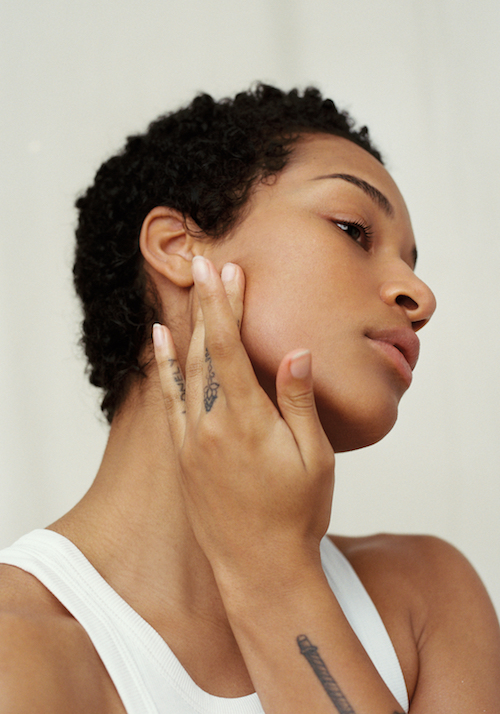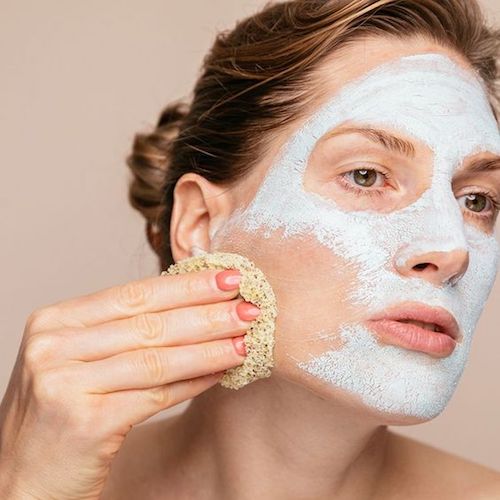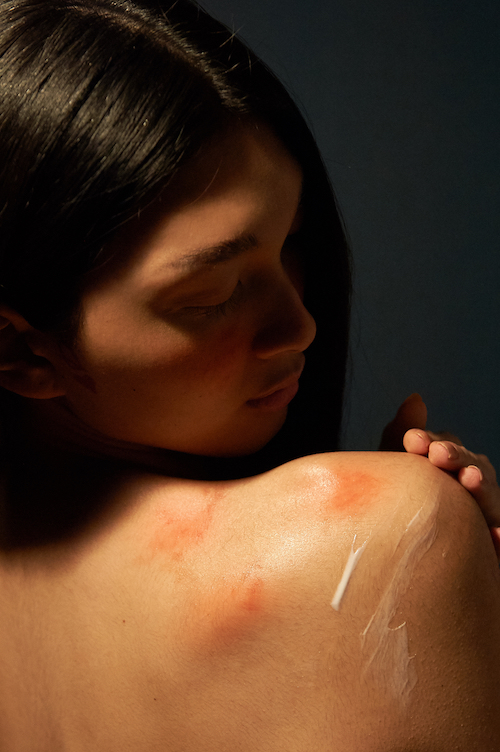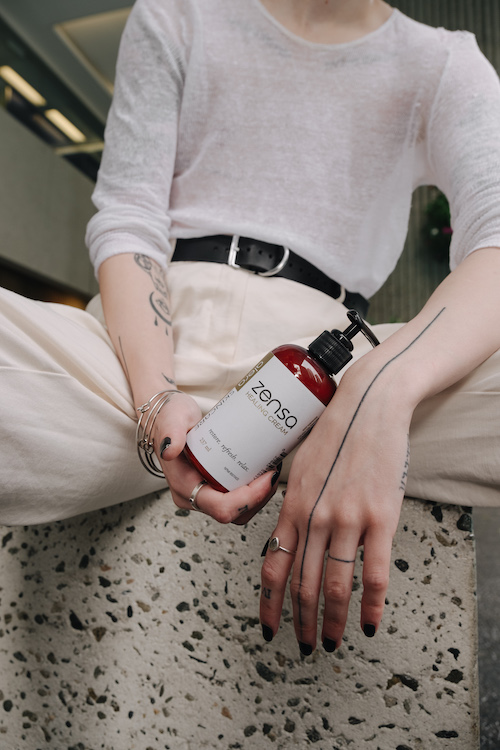Do You Have Uneven Skin Texture? Consider These 7 Causes
Do You Have Uneven Skin Texture? Consider These 7 Causes
Despite your best efforts, sometimes our skin is bound to go through a rough patch. Optimizing your skincare routine is an essential step towards maintaining smooth skin. However, uneven skin texture can result from additional factors - both in and outside of our control. Conditions from a change in the seasons to our diets and everyday routines might trigger these small bumps to appear.
Uneven skin texture is nearly as common but is a distinct condition from uneven skin tone, otherwise known as hyperpigmentation. Like uneven skin tone, though, treating these rough bumps requires a holistic approach. Smoothing out your skin’s surface can be achieved by a combination of modifications to your beauty rituals, products and overall lifestyle habits. Here are some common causes of uneven skin texture and the best ways to treat them.
Clogged Pores
Pores are tiny holes on the top layer of our skin that keep it clean, calm and comfortable. They regulate our body temperature and skin texture by releasing sweat, toxins and shedding excess skin cells. Dead skin cell buildup is the most common cause of clogged pores and often appears as concentrated dry patches. Our cell turnover rate and ability to shed excess skin layers naturally slows down as we age – leaving us more susceptible to clogged pores.

Credit: Mamie's Apothecary/Pinterest
Excess oil production or sweating, over-cleansing and using the wrong skincare products for your skin type also can clog your pores. Exfoliate two to three times a week to prevent any topical blockages and free your skin of any dirt or trapped moisture. Make sure not to over-exfoliate your skin, though, as this habit can dry out your skin.
Acne-Prone & Inflamed Skin
Acne results from inflammation and creates various types of unsightly bumps that all have different causes. Blackheads and whiteheads are the most common forms of this skin condition and are caused by clogged pores. These tiny bumps form when trapped dead skin cells, oil and bacteria build up either on the surface or right below (blackhead vs. whitehead) the top layer of your skin. These acne types are very mild and resolve themselves with proper hygiene. If you see these bumps along your hairline or on your cheeks, the acne is likely caused by your hair products and bacteria from your phone, pillows or towels.

Make sure to wash your face twice daily, regularly clean any items that touch your skin and shower after exercising or any period of profuse sweating.
Other more severe forms of acne, including pustules, cystic and nodule-like pimples, often are caused by skin infections, allergic reactions, higher stress levels, hormone changes and dietary choices. These acne types require additional topical treatments, such as salicylic acid, benzoyl peroxide or antifungal creams to calm the skin. Consult a dermatologist to see which treatments are best for specific skin concerns.
Hormone Imbalances
Estrogen, progesterone and testosterone all impact a women’s reproductive and oil production cycles. Hormonal acne often correlates with a certain period in your ovulation cycle. These bumps are caused by excess hormones in the body – typically a rise in testosterone levels.
Menopausal onset acne also is extremely common due to the sharp decrease in estrogen. Estrogen regulates oil production to keep your skin smooth and hydrated. However, as these levels decline, skin dryness becomes prevalent. These hormonal changes can result in dry, flaky patches throughout the skin. Low estrogen often correlates with skin conditions, such as eczema, and is associated with decreased resilience against bacteria and wound healing abilities.

Credit: Byrdie/Pinterest
Chronic Skin Conditions
Conditions such as eczema and psoriasis are inflammatory skin conditions characterized by red, dry, scaly and sometimes itchy patches that appear on the hands, wrists, elbows and knees. Regularly scratching these areas during flare-ups can lead to a condition called lichenification that drastically changes your skin texture. Its symptoms include intense, chronic itching to create thick leathery skin that contains dry, scaly and red or inflamed patches.

Eczema results from hypersensitive skin, while psoriasis is a response to an autoimmune condition. Potentially, the former, unlike the latter condition, can go away on its own. Once eczema has followed an individual into adulthood, though, these chronic skin disorders can be managed using similar techniques.
Speak with your dermatologist to find the best prescription topical cream for you to manage your condition. Over-the-counter treatments also are available for immediate relief. For a natural alternative, select products with medicinal-grade essential oils. Zensa Healing Cream is an all-natural, steroid-free option that uses ingredients including calendula and grapefruit seed oils to reduce irritation, and contain shea butter and cucumber extracts to hydrate and soothe the skin.

At-home practices can prevent your skin from drying out and reduce inflammation. These habits include moisturizing regularly with fragrance-free products, avoiding prolonged exposure to hot water or the sun, taking colloidal oatmeal baths, doing yoga or other low-impact exercise and maintaining a healthy diet.
Vitamin Deficiencies
Your “bad” skin days could stem from a lack of B vitamins in your diet. A deficiency in these eight nutrients can lead to a whole host of skin issues, from acne, dry, cracked and flaky skin to wrinkles, rashes and increases your susceptibility to sun damage. B vitamins facilitate proper cell turnover, collagen production, promote fast wound healing, help fight against dryness and aid in the treatment of conditions, such as eczema, rosacea and acne. They also reduce inflammation and stress to promote smooth, glowing skin.
Some food sources of B vitamins to add to your daily meals include leafy greens, cruciferous vegetables, legumes, avocado, sunflower seeds and whole grains. Low B12 levels are a common deficiency, so consider getting tested and incorporating a supplement in your diet if needed.
Vitamin B2, also known as Riboflavin, aids in Zinc absorption – another key nutrient for smooth, healthy skin. A Zinc deficiency can lead to acne flare-ups, eczema, rashes, dry and scaly skin and poor wound healing. This mineral is rich in antioxidants with anti-bacterial properties to help calm severe acne. Zinc has also been proven to slow the skin’s aging process and help prevent early signs of wrinkles. Some food sources of this mineral include legumes, seeds, nuts and dark chocolate.
Sun Exposure
Applying sunscreen daily over your entire face and body is non-negotiable. Unprotected sun exposure dries out the skin and accelerates the appearance of wrinkles or fine lines. UV rays decrease skin’s natural elasticity and can leave you with a rough, uneven skin texture.

Aside from skin texture concerns, prolonged unprotected sun exposure can result in hyperpigmentation (such as sunspots) and significantly increases your risk for skin cancer.
Use sunscreen with at least 50 SPF protection on all uncovered areas of your body before going outside. Also, avoid tanning beds and sun lamps to avoid damaging your skin.
Air Pollution
Auto exhaust, secondhand cigarette smoke, smog, manufacturing byproducts and other gas particles can unknowingly damage your skin over time. These particles release as free radicals in the surrounding environment. Regular exposure to these particles can leave the skin dry, itch and more susceptible to wrinkles and clogged pores. Without proper skin care, these environmental factors can lead to acne-like bumps or decreased skin elasticity.
Prevent these long-term effects by washing your face thoroughly with a mild cleanser and follow with a toner. Exfoliate regularly, moisturize and apply sunscreen daily. Fight inflammation with a diet full of antioxidant-rich foods.
